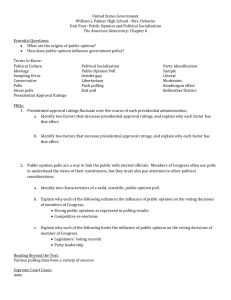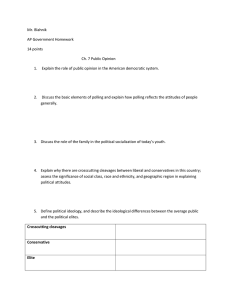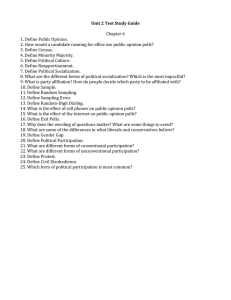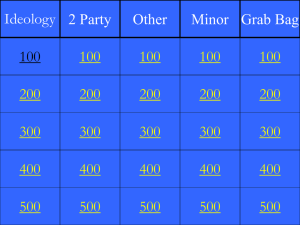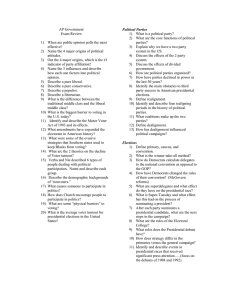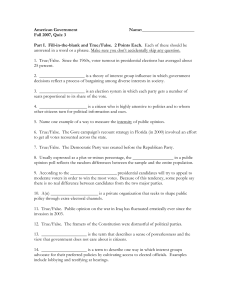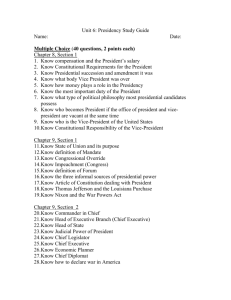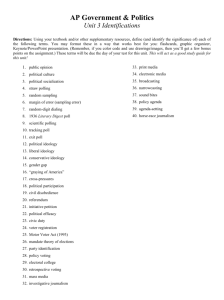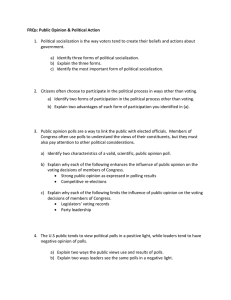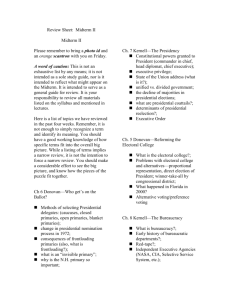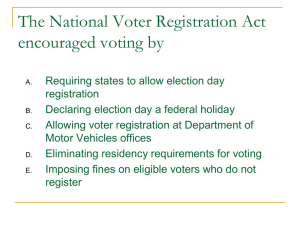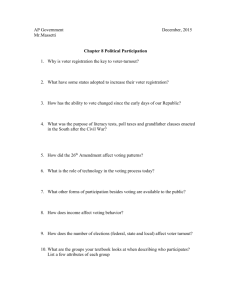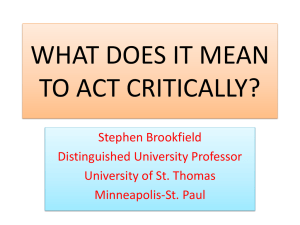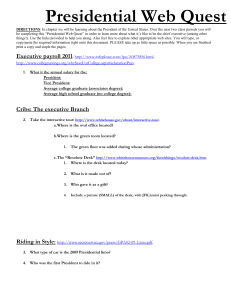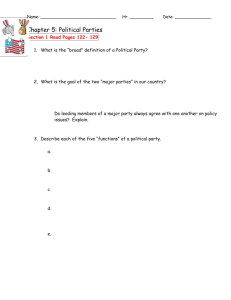Crystal Ball Contest - Augusta County Public Schools
advertisement
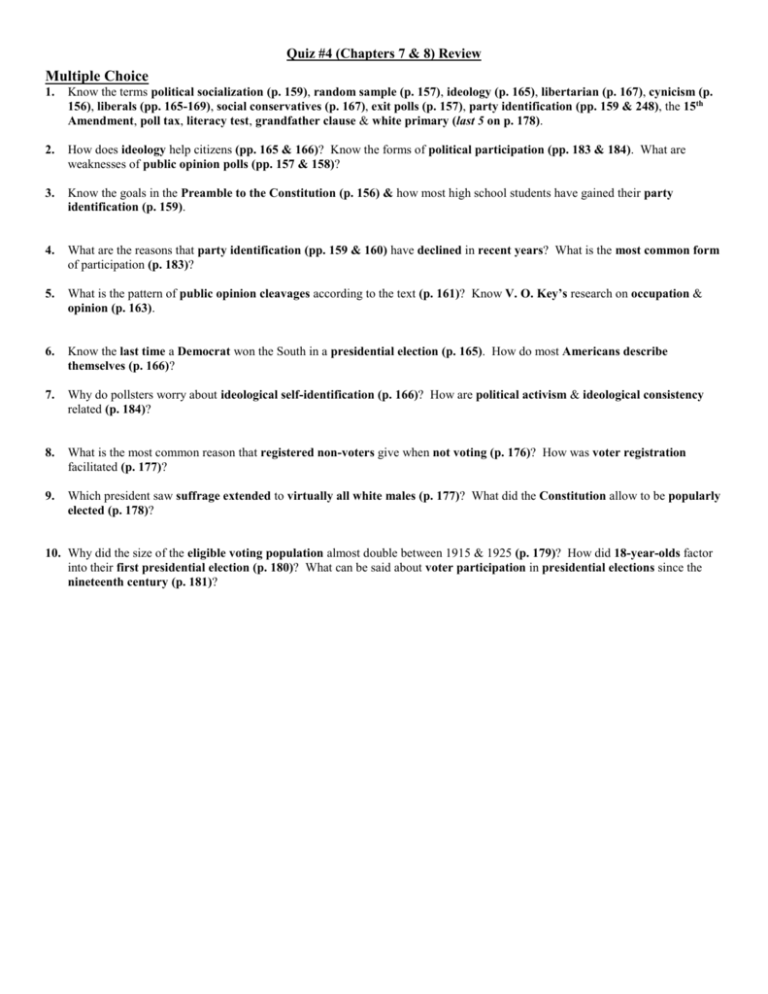
Quiz #4 (Chapters 7 & 8) Review Multiple Choice 1. Know the terms political socialization (p. 159), random sample (p. 157), ideology (p. 165), libertarian (p. 167), cynicism (p. 156), liberals (pp. 165-169), social conservatives (p. 167), exit polls (p. 157), party identification (pp. 159 & 248), the 15th Amendment, poll tax, literacy test, grandfather clause & white primary (last 5 on p. 178). 2. How does ideology help citizens (pp. 165 & 166)? Know the forms of political participation (pp. 183 & 184). What are weaknesses of public opinion polls (pp. 157 & 158)? 3. Know the goals in the Preamble to the Constitution (p. 156) & how most high school students have gained their party identification (p. 159). 4. What are the reasons that party identification (pp. 159 & 160) have declined in recent years? What is the most common form of participation (p. 183)? 5. What is the pattern of public opinion cleavages according to the text (p. 161)? Know V. O. Key’s research on occupation & opinion (p. 163). 6. Know the last time a Democrat won the South in a presidential election (p. 165). How do most Americans describe themselves (p. 166)? 7. Why do pollsters worry about ideological self-identification (p. 166)? How are political activism & ideological consistency related (p. 184)? 8. What is the most common reason that registered non-voters give when not voting (p. 176)? How was voter registration facilitated (p. 177)? 9. Which president saw suffrage extended to virtually all white males (p. 177)? What did the Constitution allow to be popularly elected (p. 178)? 10. Why did the size of the eligible voting population almost double between 1915 & 1925 (p. 179)? How did 18-year-olds factor into their first presidential election (p. 180)? What can be said about voter participation in presidential elections since the nineteenth century (p. 181)?
